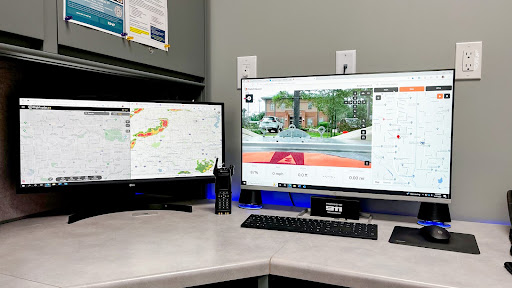If you are thinking of starting a DFR program for your department or agency, there is a lot to consider when planning, such as hardware and software, size and scope of your program, certifications or waivers needed to operate, as well as the necessary training.
The good news is there are resources available to help you in making informed decisions about your program and how to work with the FAA to secure the necessary waivers to operate BVLOS.. This article will provide just a few valuable resources to help you get started.
1) The FAA
The FAA website includes many resources on how to navigate the regulatory side of setting up a program. Useful content includes details on the emergency SGI process and the Public Safety and Law Enforcement Toolkit. Additionally, the FAA’s YouTube channel includes helpful videos, such as a Drone Webinar series with videos on how to analyze airspace, and a podcast series.
When in doubt and you’ve exhausted online resources, emailing and calling FAA members who are subject matter experts in the area you need help with might be useful too, and has been very helpful for us in the past.
2) Other Departments
Another great source of information are departments that have successfully started DFR programs and sorted out their COAs (Certificate of Authorization), and BVLOS (Beyond Visual Line of Sight) waivers. Elizabeth Police Department in New Jersey is the most experienced agency in DFR using LTE capabilities. Chula Vista PD started the first successful DFR program in the states. Both departments regularly host interested departments in person at their PD too! You could also use the DRONERESPONDERS’ list of departments and find departments in your state or county, or reach out to some of the flagship departments.
3) AUVSI
The Association of Uncrewed Vehicle Systems International is the world’s largest nonprofit organization dedicated to the advancement of drones. They offer events co-hosted with the FAA such as the Drone Symposium in Florida, a Know Before You Fly resource center for government entities, and their chapter heads in all states are among the most involved and knowledgeable resources you will find.
As adoption of drone technology in public safety continues to increase and evolve, we anticipate that DFR programs will soon become more and more commonplace. While officers on scene responding to calls will always be needed, drones can provide valuable situational awareness or overwatch in a wide variety of scenarios, help clear calls faster, and provide a cost-effective option for many departments.
4) DRONERESPONDERS
DRONERESPONDERS is the world’s fastest growing non-profit program supporting Public Safety UAS and drones for good. There is no cost to join, and as a member, you will have access to DRONERESPONDERS resource center, containing hundreds of useful documents around how to set up your own DFR Program. DRONERESPONDER’s Charles Werner organizes regular webinars with industry experts, including Mike O’Shea from the FAA, which are useful for staying up to date on regulatory changes.
5) Pilot Institute
PIlot institute is a great resource for anyone interested in learning about starting their own Drones as First Responders program. They offer a class on the Part 107 exam, to become a FAA licensed drone pilot, with 99.8% of their students passing and offer a full refund if you fail the test. While Part 107 and COA’s cannot be used on the same mission, at least one person if not all participants being Part 107 certified within a DFR program is strongly recommended. Pilot Institute has had over 170.000 class enrollments so far.
Pilot Institute also offers free deep dives on DJI drones, as well as weekly updates on drone industry news, from product releases to FAA regulatory changes on their YouTube channel.
Need help starting your own DFR Program or securing BVLOS waivers? Reach out to us today and talk to a member of our team.

